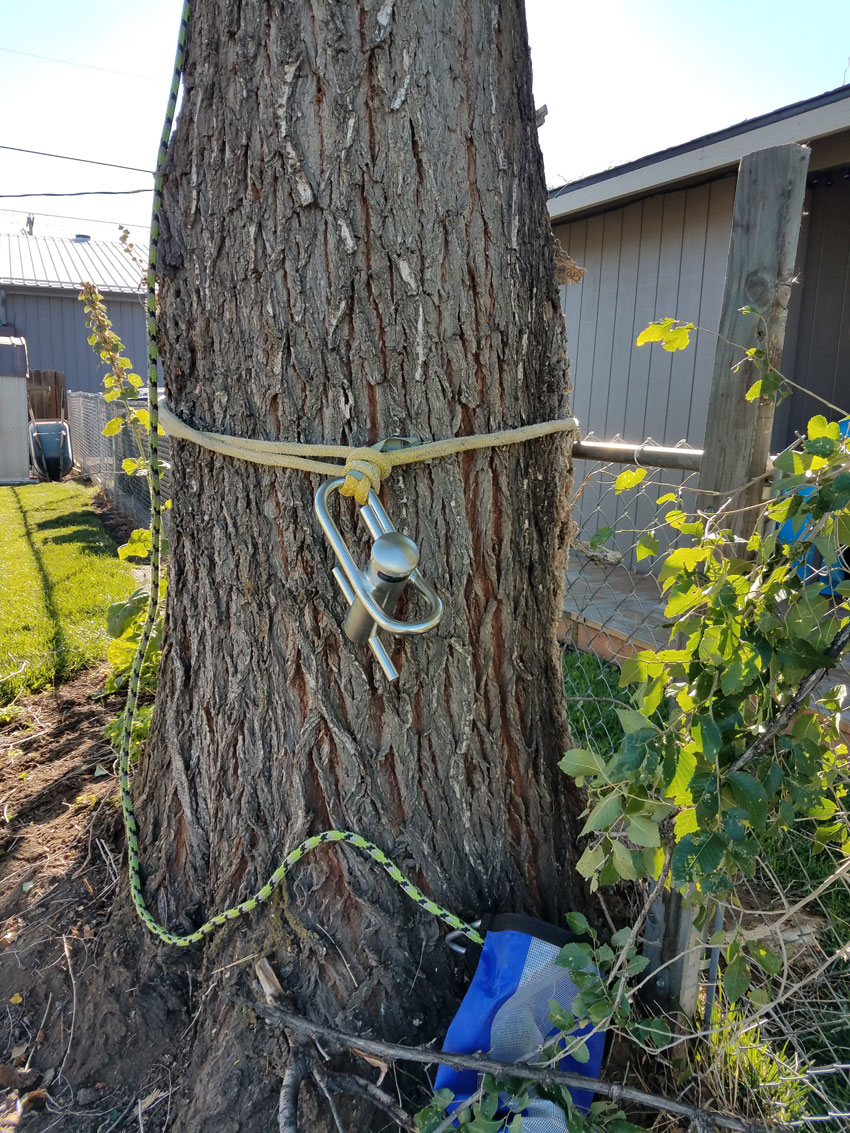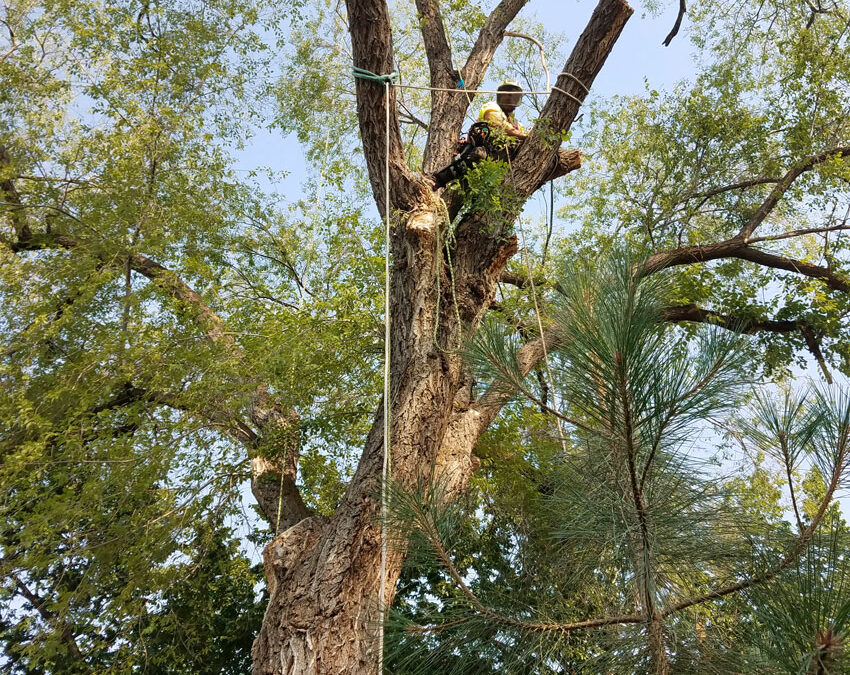If you have a particularly large tree, a small yard, or a lot of what tree professionals call “targets” (which oddly enough means things you DON’T want to hit with limbs/tree parts etc.) you will likely hear use of the term “Rig” in regards to the removal or pruning of your trees. This article is meant to explain what rigging is and what we use to safely lower limbs and stem wood from your trees.
We will start with a basic definition: Rig – The use of ropes to control the lowering of wood to the ground.
 Sounds pretty simple right? But there are many pieces at play in such a simple task. We get asked a lot about “what is that?” when setting up proper rigging equipment, and every scenario is different. Most rigging scenarios require at least the climber and one groundsman. The climber sets the ropes and makes the cuts, while the groundsman controls the actual fall of the wood to the ground. The rigging system is a series of ropes and mechanical devices that allow the crew to adjust the friction and direction of the rope. Typically there is a friction device at the base of the tree to allow the groundsman to adjust the speed of the fall based on wood size, proximity to the climber, and proximity to surrounding targets. There is also a friction saver (or rigging ring) in the tree that the climber moves as necessary that the rope slides through (kind of like a pulley, but not) that can be used to redirect the cut piece away from a target. There are other variables at play as to how rigging is applied, but for the sake of clarity we won’t go into detail of negative vs. positive rigging etc. here.
Sounds pretty simple right? But there are many pieces at play in such a simple task. We get asked a lot about “what is that?” when setting up proper rigging equipment, and every scenario is different. Most rigging scenarios require at least the climber and one groundsman. The climber sets the ropes and makes the cuts, while the groundsman controls the actual fall of the wood to the ground. The rigging system is a series of ropes and mechanical devices that allow the crew to adjust the friction and direction of the rope. Typically there is a friction device at the base of the tree to allow the groundsman to adjust the speed of the fall based on wood size, proximity to the climber, and proximity to surrounding targets. There is also a friction saver (or rigging ring) in the tree that the climber moves as necessary that the rope slides through (kind of like a pulley, but not) that can be used to redirect the cut piece away from a target. There are other variables at play as to how rigging is applied, but for the sake of clarity we won’t go into detail of negative vs. positive rigging etc. here.
So how does this affect you as the homeowner? The simple answer is that any tree requiring rigging is going to take more time as ropes need to be moved and set individually for each cut, as well as the training and skills needed by the crew to bring each section down exactly where it needs to land. More time means a more extensive and expensive project whether it is a prune or a removal. But, the extra time taken by our crew, and extra money spent, also means saving that pergola from damage, or not dropping limbs on your pool, or safely removing limbs from over your roof amongst many other things.

